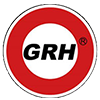The Hydraulic Equipment Market was valued at USD 44.11 billion in 2020 and is expected to reach USD 56.98 billion by 2026, at a CAGR of 4.36% over the forecast period (2021-2026). The rise in the need for energy and discoveries of new shale fields are compelling the E&P companies to expand their exploration programs and supporting the demand.
- Modern hydraulic equipment is accessible in several industries, including construction, roofing, material handling, masonry, automotive, aviation and manufacturing. In construction, roofing, material handling, and masonry, hydraulic equipment are used with components like bulldozers, lifts, and cranes. While, in the automotive and aviation industries, it is used for power transmission and braking applications.
- In an attempt to offer differentiated products, an increasing number of hydraulic equipment manufacturers are offering various integrated Hydraulic Cylinder systems as well as solutions. The differentiation mentioned above method helps these manufacturers to enhance the value through the delivery of systems or subsystems that include cylinders as well as ancillary products like pumps and valves. These integrated offerings also help in strengthening the ability to mop up profits from maintenance and aftermarket services. From the perspective of the end-users, the above arrangement translates into a more efficient design, offers better engineering and purchasing solutions, and also lowers the overall costs of operations.



